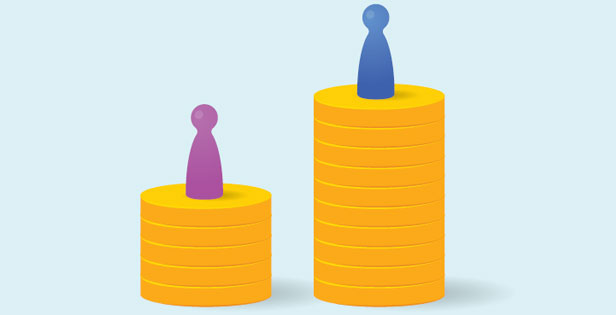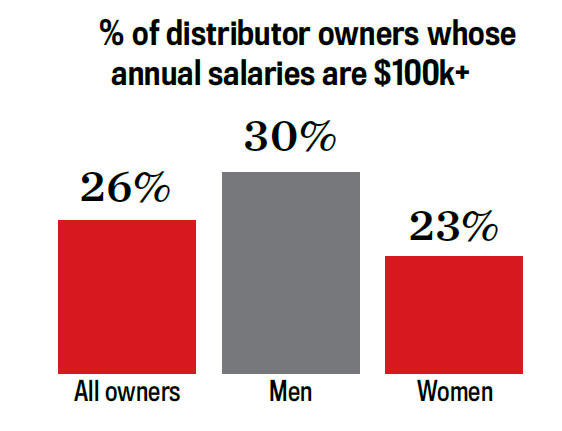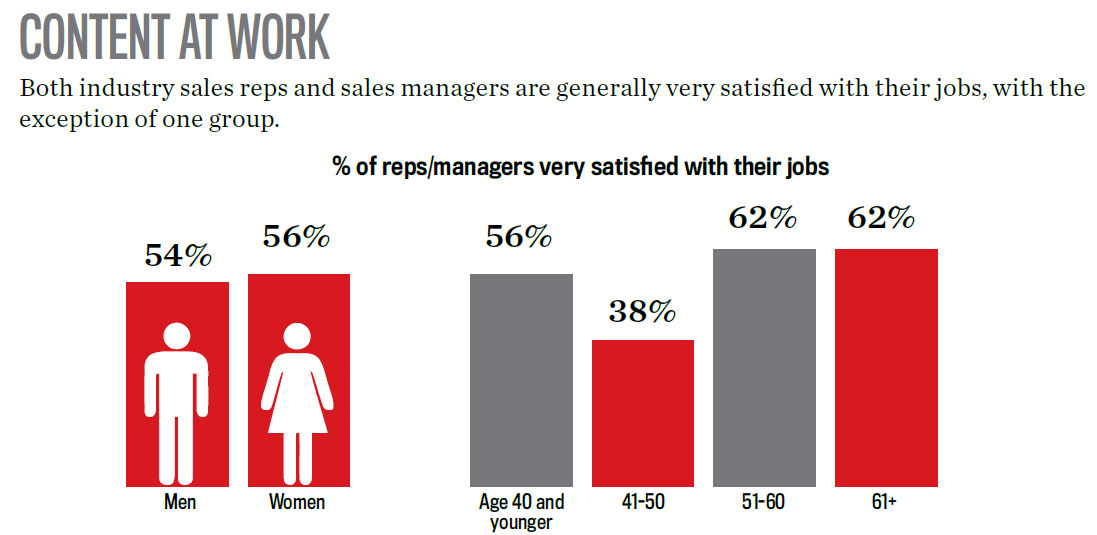Awards August 03, 2018
SOI 2018: Compensation & Job Satisfaction in the Promo Industry
Is there a gender wage gap in the promo products market? It depends if you’re a rep or an owner.
Pay parity in the corporate world has been an ongoing debate, beginning well before the #MeToo and Time’s Up movements came to prominence. Recent individual reports by the U.S. Census Bureau and Pew Research Center show women earned between 80%-82% of what men did in 2016 and 2017.
State of the Industry 2018 Index Page
However, the promotional products industry appears to be a much more level playing field when it comes to women’s pay. In fact, the earnings gap is only about 4% between male and female salespeople in promo (men earn more), showing there’s opportunity for most anyone if they’re willing to work to get ahead.
“At Jack Nadel (asi/279600) as a whole, we have lots of badass females making a ton of money,” says Mallory Ebrahemi, a creative branding specialist at the California-based firm.

A big reason for the equity is the popularity of the commission pay model. About 42% of distributor sales reps work strictly on commission, and another 7% earn a combination of commission, plus a salary or a bonus.
“Since much of the compensation for professionals in our industry is commission-based, it makes perfect sense that there wouldn’t be much of a pay gap. Commission sales is the great equalizer,” says David Blaise, head of industry consultancy Blaise Drake & Company. “Those who sell well earn more money than those who don’t, regardless of gender.”
“Those who sell well earn more money than those who don’t, regardless of gender.” David Blaise, Blaise Drake & Company
Sandy Higgins, CEO of Crackerjack Shack, became a familiar voice on the topic of gender in business after being featured in a 2016 Forbes “Story Exchange.” At the time, she was applauded for being one of only 2% of women-owned businesses that earned over $1 million in revenues, according to Forbes. “I’ve been asked this question many times. I don’t feel disadvantaged by being female,” says Higgins.
Nina Shatz, brand development director at Top 40 firm HALO Branded Solutions (asi/356000), agrees with Higgins to a point, but adds “I do think that as with any profession, it sometimes takes more effort for women. Women will always need to spend a bit more time to be taken seriously, no matter how sharp and savvy one may be. I think women within our industry would like to have more opportunities to formally discuss challenges that might arise, or brainstorm together in a non-competitive environment.”
That said, Shatz feels the promo products industry is an “incredible” place for women. “I’m consistently impressed with both women vendors and distributors,” she says.
At New York-based Axis Promotions (asi/128263), “almost all of our top salespeople are women, and they do incredibly well,” says CEO Larry Cohen. “We’re big believers in the topic of advancement of women.” In fact, women make up 80% of Axis’ 70-person workforce.
While Cohen says he does get questions about pay parity, he gets asked more frequently about the subject of pay structures in general. “The old commission structure may not be as viable,” he says. “After living through unstable economic times, employees don’t necessarily want to be paid pure commission. They’d rather have more security, with perhaps a lower commission rate.”
This is a conversation industry reps and business owners are having, says Cohen. “Our business world is changing, especially in the wake of Time’s Up and Me Too movements.”
One step Axis is taking: “We’re trying to make a lot of bonus decisions less discretionary and more quantifiable, so employees know what their goals are and how to achieve them,” Cohen says.
A Notable Difference
Men who own distributorships earn more money than women, but execs think the disparity is simply rooted in style, not unfairness.
While compensation between men and women sales reps in promo appears to be pretty equal, our data tells a different story when it comes to pay levels between company owners. On average, owners who are men pulled in $92,000 compared to $67,000 for women who owned promo businesses in 2017. One reason for the gap: men are more likely to own companies that have three or more reps, and of this group, the owner’s average pay is over $170,000 per year, data shows. Beyond that, operational styles could also play a role.
“I think it’s more likely to be based on the size of your business and how you run it versus being a gender issue,” says Larry Cohen, CEO of Axis Promotions (asi/128263). “Women are on industry boards and committees and their voices are being heard. They’re definitely seated at the table.”

Crackerjack Shack CEO Sandy Higgins owns a brick and mortar store, which creates greater expenses for her than other distributors might face. “I don’t know what my competitors make. I tend to over-service my customers, so I’m willing to spend where others might not be,” she says. “It’s hard to compare apples to apples.”
Meanwhile, Rachel Leone, owner of Leone Marketing Solutions (asi/251966), believes the 2017 data is simply a blip, arguing that “it all comes down to experience, work ethic, connections and bringing in business. I don’t think it matters if you’re male or female. There are 23,000 distributors and overall I know more successful women-owned companies.”
Industry consultant David Blaise believes leadership approaches could be another factor in the owner pay gap. “Owner compensation is normally tied directly to profitability,” he says. “But if women in companies doing a sales volume similar to men are paying themselves less, then maybe they’re choosing to invest their profits in additional resources and personnel rather than owner compensation. Much of it depends upon the goal of the owner.”
 Click here for a larger image of the above graphic.
Click here for a larger image of the above graphic.
Is there a mid-life career crisis in the promo industry? There could be a hint of one. Sales reps and managers age 41-50 are less satisfied in their jobs than other age groups, according to ASI data.
Axis Promotions’ (asi/128263) CEO Larry Cohen has one theory. “I don’t see dissatisfaction in this age group specifically, but it could be that this demographic came up in the business when there wasn’t as much transparency,” says Cohen. “They may not be as used to millennial online buying patterns and types of selling.”
The younger demographic holds fewer meetings, asks more questions, and prefers connecting via text and email. “People who grew up with a more traditional style of selling might find it frustrating. If you’re old-school, this might be hard,” Cohen says.
Brandito (asi/325944) VP Kevin Mullaney wonders if this 41-50 age group “could just be experiencing some burnout. Some managers may have been extremely successful sales reps that earned their promotion for being a top performer. This is a common mistake in sales organizations. Not all great sales people become great, or even good, sales managers.”
How can execs deal with this burnout? “I suggest leaders talk to their top performers and make sure they have a clear career path,” Mullaney says. “If reps just want to pump gas into your sales pipeline, don’t take offense.”
 Click here for a larger image of the above graphic.
Click here for a larger image of the above graphic.
